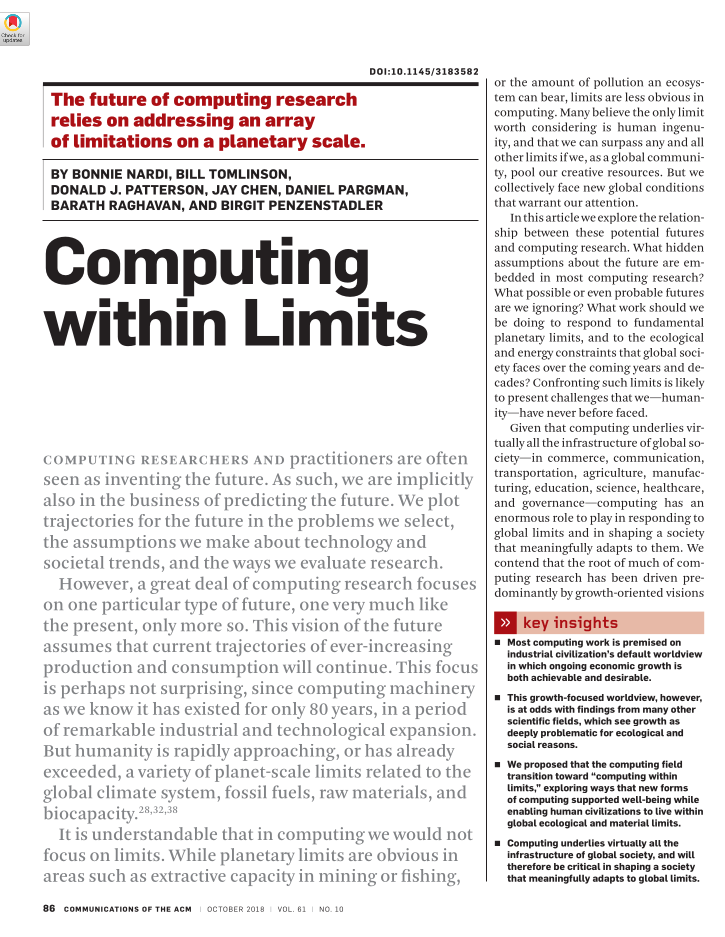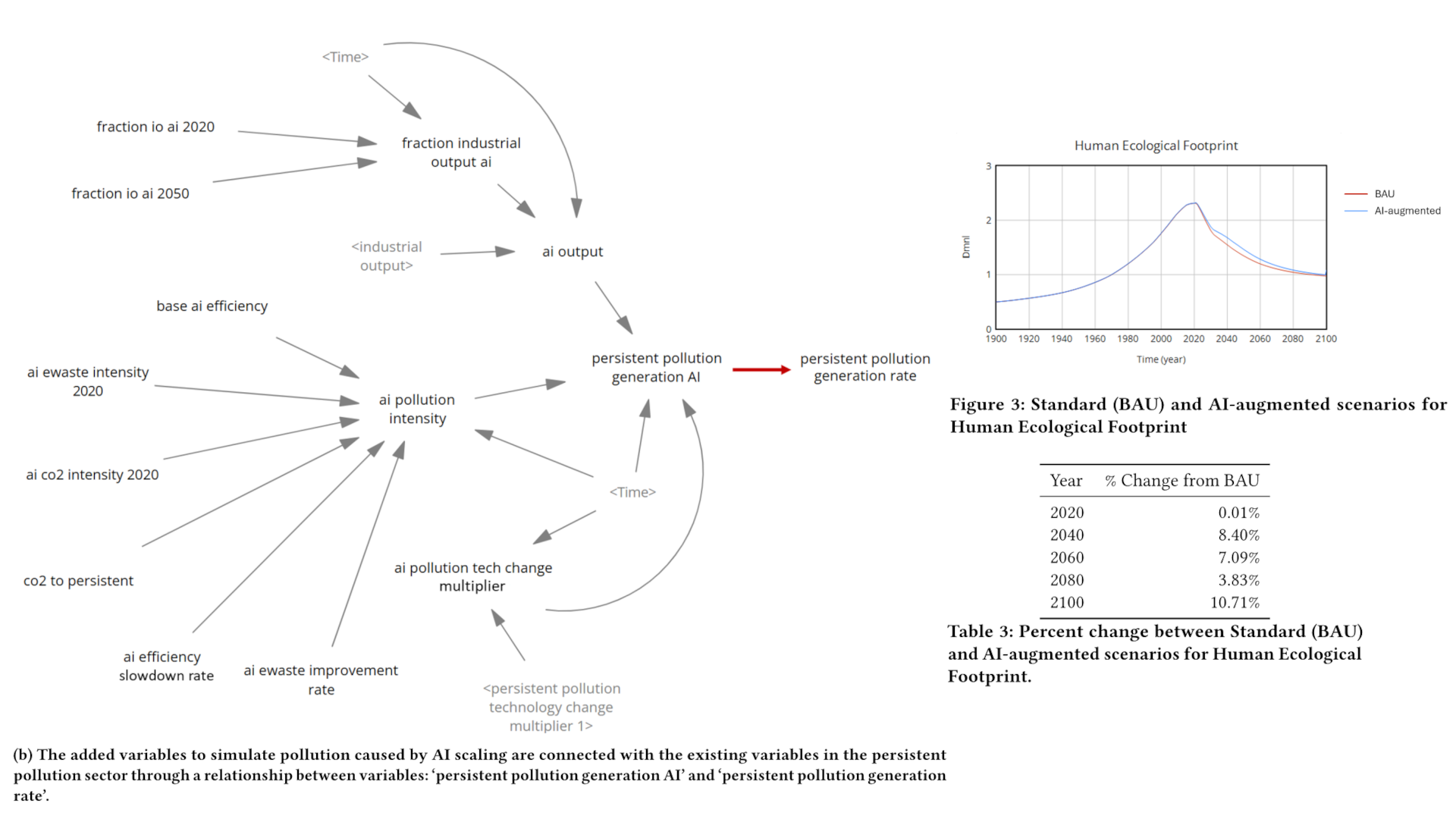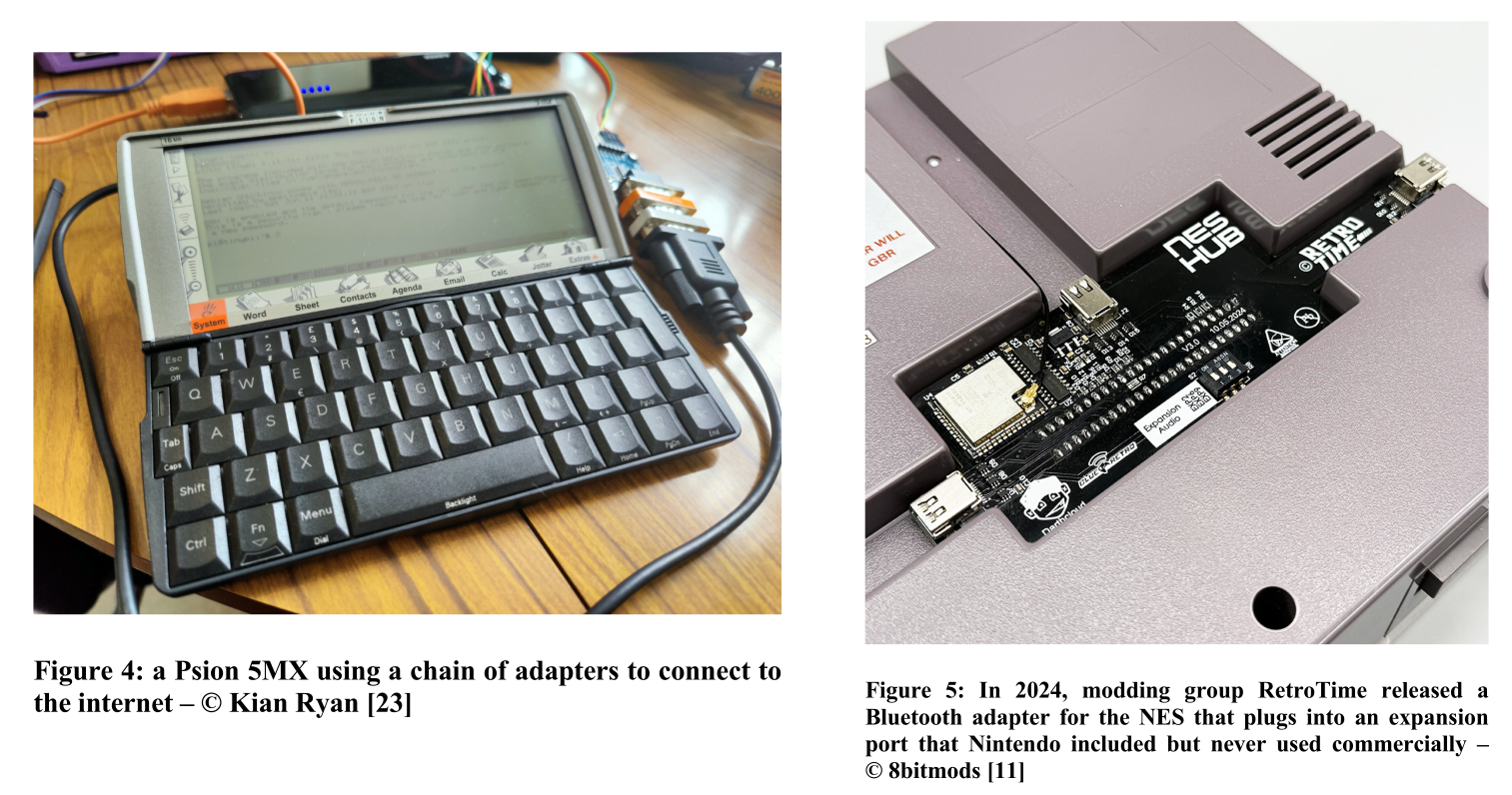Erwan Bousse
Nantes Université
Communications of the ACM, October 2018
Erwan Bousse
Nantes Université

Nardi, B., Tomlinson, B., Patterson, D. J., Chen, J., Pargman, D., Raghavan, B., & Penzenstadler, B. (2018). Computing within limits. Communications of the ACM, 61(10), 86-93.
Published in October 2018
8 pages long (including decorative pictures)
118 citations
Explain the need to think about planet-scale limits and futures in IT research
Present the Computing within Limits (shortened to LIMITS) theme and community
Explain how LIMITS is related to existing research communities
Provide a set of "key principles" for LIMITS research
A view on present computing research
Computing reseachers and practitioners often seen as inventing the future.
Thus implicitly also predicting the future: ploting trajectories for the future in the selected problems, the assumptions about technology and societal trends, the ways we evaluate research.
Commonly, strong/narrow focus on one particular type of future: that the ever-increasing production and consumption will continue.
However planet-scale limits more and more exceeded related to global climate system, fossil fuels, raw materials, and biocapacity.
Such limits are less "obvious" on computing, as compared to eg. mining or fishing.
A self-perpetuating cornucopian cycle
Cornucopianism is the idea that continued supply of the material needs of humankind can be achieved through continued advances in technology. It contends that there is enough matter and energy available for practically unlimited growth.
Establishment of a cornucopian paradigm in computing where:
the design of new services stimulates demand,
which drives growth of increased infrastructure capacity,
which then cycles back to enable the design of new services
… in a self-perpetuating cycle.
Questioning research in computing
What hidden assumptions about the future are embedded in most computing research?
What possible or even probable futures are we ignoring?
What work should we be doing to respond to fundamental planetary limits, and to the ecological and energy constraints that global society faces over the coming years and decades?
Confronting such limits is likely to present challenges that we— humanity — have never before faced.
Questioning research in computing
We contend that the root of much of computing research has been driven pre-dominantly by growth-oriented visions of society’s future.
If we broaden our view to a more diverse set of possible futures, including non growth-reliant futures, the societal challenges of ecological and energy limits can shape concrete technical challenges in computing research and practice.
Definition
Community from computer science and engineering, information science, social science, ecology, agriculture, and earth sciences to explore what we call “computing within limits”
Current and near-future ecological, material, and energy limits;
Ways new forms of computing support well-being while living within such limits;
Impact these limits are likely to have on the field of computing
Computing research goal
LIMITS is concerned with the material impacts of computation itself,
but, more broadly and more importantly, it engages a deeper, transformative shift in computing research and practice
to one that would use computing to contribute to the overall process of transitioning to a future in which the well-being of humans and other species is the primary objective.
LIMITS has a shared interest with Green IT’s aim improve efficiency, and with other traditionally “green” research topics.
However LIMITS challenges Green IT’s implicit assumption that we can “engineer around” the finite-ness of the Earth’s resources and waste
We question the focus on ongoing economic growth that lies at the heart of industrial civilization and propose a shift from emphasis on standards of living and material productivity to an emphasis on long-term wellbeing.
Foundational notion of Collapse Informatics initially from SCHI
LIMITS shifts emphasis to planetary limits rather than societal decline
Crisis informatics assumes an external entity that enacts a rescue for a disaster (eg. flood or earthquake), with localized events and available resources
LIMITS assumes no external entity for relief, long time frames, and a global scale
“Future” LIMITS scenarios may already exist today in the conditions in which poor communities live around the world
Yet ICTD literature rarely considers global ecological, material, and energy limits
Burdens on ecosystems suggest we must rethink the growth paradigm.
Computing may be used to transform the economic system
Clever technological fixes may help us defer catastrophes, but not indefinitely
Consider LIMITS-related scenarios rather than denying their possibility or treating their foreshocks as isolated incidents
Possible future where remaining resources would not be enough to avert catastrophic outcomes
Attempts to limit resource usage in any human system are notoriously challenging
The LIMITS workshop concerns the role of computing in human societies situated in a world of limits, such as limits of extractive logics, limits to a biosphere’s ability to recover, limits to our knowledge, or limits to technological solutions to societal issues. As an interdisciplinary group of researchers, practitioners, and scholars, we seek to reshape the computing research agenda, grounded by an awareness that contemporary computing research is intertwined with ecological limits in general, and climate- and climate justice-related limits in particular.
Imposing AI: Deceptive design patterns against sustainability
Exploring the Viability of the Updated World3 Model for Examining the Impact of Computing on Planetary Boundaries
Sprouting technology otherwise, hospicing negative commons. Rethinking technology in the transition to sustainability-oriented futures
ICT Within Limits Requires Old-Fashioned By Design
Zombitron: towards a toolbox for repurposing obsolete smartphones into new interactive systems
Practical Retrofitting for Obsolete Devices
The Case for Time-Shared Computing Resources
Surviving the Narrative Collapse: Sustainability and Justice in Computing Within Limits
Explor. the Viability of the Updated World3 Model for Examining the Impact of Computing on Planet. Bound.

Practical Retrofitting for Obsolete Devices
